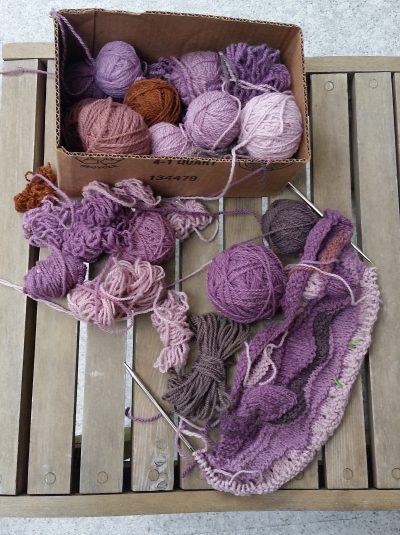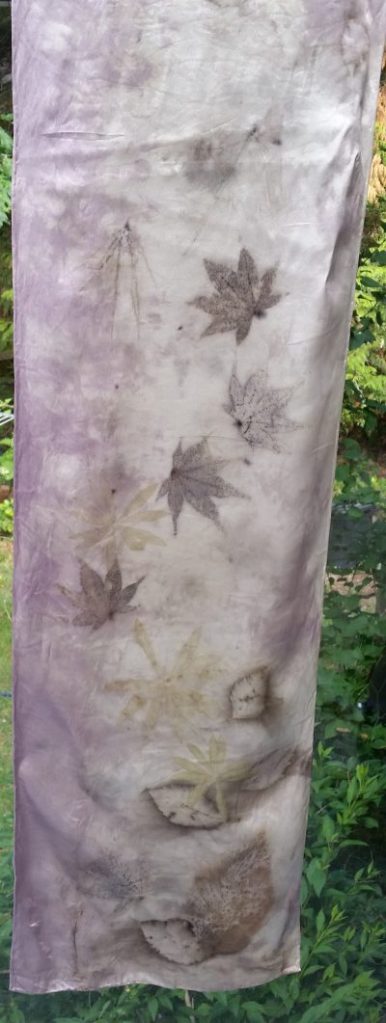A while ago I was presented with a lovely gift: 150 grams of dried Hapalopilus rutilans from Sweden. I’ve never seen one of these in situ, but they look as if they would be easy to miss—they’re small, brown bracket fungi that grow on dead deciduous trees (preferring oak, beech, and birch), and the casual observer would never guess their amazing dye properties. I’ve been making dyebaths with this precious treasure for several months now—I think I’m on boil-up number 29 or 30 now. I haven’t posted about this miraculous dye fungus yet because I was going to wait until it was completely exhausted, but it looks as if that could take some time. Here’s what I have to work with so far—each ball of yarn represents a separate dyepot:

I dyed each batch by first cooking up the mushrooms in just enough water to cover (it releases its brilliant purple in just 15 or 20 minutes), then putting the dyebath and wool roving in a large glass jar and simmering that in a pot of water, effectively creating a double boiler. This eliminates the risk of overheating and felting the wool.

I used mainly alum-mordanted wool for this, with the occasional bit of roving mordanted with iron (the steel grey yarn in the image) and copper (that’s the rich copper colour). I hope to have completed a scarf using all the colours given by these amazing little fungi in time to take to the 2018 Fungi & Fibre Symposium coming up in August in Oslo. All spots at that event were booked up in the spring— I’m so looking forward to seeing all my mushroom-dyeing friends again!
To change things up a bit, I experimented with an ecoprinted silk scarf that I felt needed a bit of colour. I have to say I’m pleased with the result.


Beautiful colours! I’m wondering if that double boiler method would work for other plant dyes when using roving and other loose fibre. I’ll give it a try!
Yes it will. I don’t usually dye with that method because I like to dye larger quantities of fibre, but it’s certainly a lot safer if you need to keep an eye on temperature, either to avoid felting or if your dye material is something that can’t be overheated.
Amazing colours Ann! Love the scarf!
Yeah, they are amazing – one day the scarf will be finished . . .
The purple is just gorgeous! We got a cerise from a lichen found near Big Bear (with ranger’s permission) but there was not enough, we thought, to give much color. It, too, kept giving and giving.
Yes, I might never get another windfall like that, so it’s particularly special. Do you know which lichen gave you so much red?